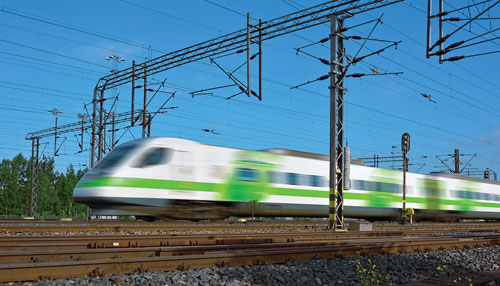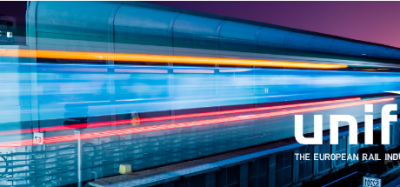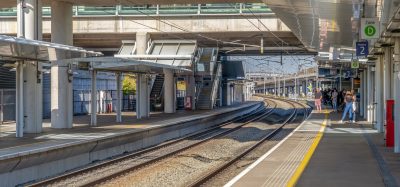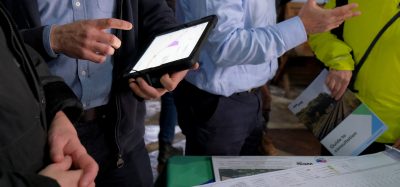Finland concentrates on rail network development
Posted: 7 April 2015 | | No comments yet
The greatest challenge in Finland is an insufficient amount of maintenance funds which have resulted in maintenance backlogs in both railway and road infrastructure management. In a report completed in autumn 2014, the parliamentary working group under the Minister of Transport and Local Government proposed an additional annual appropriation of €150 million for maintenance of the existing transport infrastructure and its systems and an additional amount of approximately €50 million per year to strengthen the purchasing power. More emphasis is to be put on small projects and the level of the overall investment in developments will be lowered from the current approximately €600 million per year to €380 million per year for the construction of roads, railways and waterways. Kari Ruohonen, Director General of Projects at the Finnish Transport Agency provides details about the current state of network maintenance and investment projects in Finland which will ensure that the future demands of the industry are met…


In Finland, the focus lies on railway transport development. In Helsinki and in the Helsinki Metropolitan Area, the Helsinki Metro is being extended to Espoo, and in Vantaa the building of the Ring Rail Line, i.e. the airport and urban railway, is underway. Both projects comprise long tunnel sections and underground stations. The Ring Rail Line will be completed in 2015 and the first phase of the West Metro in 2016. The 2016 state budget allocates €840 million for the second phase of the West Metro, to be completed in 2020. The state subsidy of the metro projects amounts to 30% of the costs, and the city of Vantaa finances 30% of the Ring Rail Line.
The Ring Rail Line will be opened to traffic on 1 July 2015. It is an important land-use project, which will link two currently very disconnected centres situated within the City of Vantaa, i.e. the centre along the Tikkurila main railway line and the areas in Western Vantaa.
All long-distance trains stop at Tikkurila, and the new spectacular station bridge offers good transfer connections to the airport. The journey from Tikkurila station takes less than 10 minutes, and trains run at 10-minute intervals. Escalators lead directly from the Airport train station to the flight terminal. The construction phase of the tunnel under the airport proved to be exceptionally challenging. The first sign of problems was a noticeable smell of sewage. Then, water leaking from rock turned pink and started to ‘blossom’ and a film with large bubbles formed on the water surface. Examinations revealed that this was caused by the substance glycol, used for de-icing at the airport, and its disintegration products. The soil in the area, i.e. moraine and clay, may also have had an impact on this phenomenon. These types of problems seem to be particular only to the Helsinki-Vantaa Airport and resulted in a two-week interruption in the progress of the tunnel. Furthermore, double constructions had to be built, and the entire phase was prolonged by more than a year. The costs incurred by this amounted to €50 million in the project, totalling €850 million.
Since 2000, the number of railway passengers, especially in the Helsinki Metropolitan Area, has increased by approximately 40%. The construction of separate urban railway lines continues northward from Kerava. An extension of the urban railway lines westward from the centre of Espoo is in the planning phase. One of the challenges here is the comprehensive development of train traffic in the Helsinki region, i.e. improving the capacity of Helsinki Central Railway Station as well as the main railway lines, and the building of the City Rail Loop.
The City Rail Loop is a planned underground railway line, which would run in an 8km-long tunnel under the centre of Helsinki. Its three underground tunnel stations would significantly improve access by rail between the different parts of the city. The City Centre station would be located right next to the existing Helsinki Central Railway Station, but 50m-below ground, next to the metro station. A budget for the City Rail Loop has not yet been decided upon, but the project has been included in the 4-year plan, and an EU-grant application will be submitted. The project is part of the EU Core Network Corridor The North Sea-Baltic Corridor.
A new 500,000km2 district with high-rise buildings will be built approximately 3km north of Helsinki Central Railway Station, on an obsolete freight yard. In connection with this, Pasila Railway Station will be improved and construction of an additional platform line has commenced.
This year, the Helsinki Region Transport (HSL) is putting the train traffic in its area out to tender. Most of the trains are owned by Pääkaupunkiseudun Junakalusto Oy, which in turn is owned by the municipalities. Service facilities are located at the Ilmala depot, 5km from the Helsinki Central Railway Station. The winning service provider will begin operations at the beginning of 2017. At the end of 2014, Helsinki Region Traffic received an advantageous offer by the current operator VR, which they have preliminarily accepted. The contract would extend VR operations until summer 2021 and it would, according to the offer, cut the current operation costs by about 15%. VR’s monopoly in long-distance traffic would continue until 2024 on the basis of the contract between the Ministry of Transport and Communications and VR.
The future development projects also include the city centres, where impractical and antiquated railway yards cover an extensive area in the most attractive locations from an urban design point-of-view. Nearly 20 locations are currently being planned, and the suggested solution is to start building on top of the railway lines.
In addition to the Helsinki Metro extensions, the possibilities to build tramways in Turku and Tampere have also been explored. Decisions on further planning and competitive tendering have already been made on the Tampere tramway project. The state subsidy accounts for 30% of the planning phase, which is the maximum amount allowed for railway projects in large cities, according to the Transport Policy Report of the current government.
In Finland’s domestic transport, the share of freight transport has increased by almost 30%. Freight transport was deregulated in 2007, but most of the transport is operated by the fully state-owned VR Oy. VR is renewing both its electric and diesel traction stock. The first new Last Mail electric locomotives will soon be tested. Whenever swift railway yard functions can be carried out without electricity, the development needs of the railway yards are affected as well. The timing for this change is right, since most of the Finnish railway yards were built in the 1970s, or earlier. The number of tracks is sufficient, but the length of the tracks is inadequate. The aim is to provide services for mostly 750m-long trains, and especially in transit traffic, for 925m-long or even 1,100m-long trains. The functionality of railway yards in the vicinity of many city centres is now being planned, with the aim of releasing areas for property development. Projects to improve the existing railway network are also underway.
Approximately 90% of the Finnish railway network is single-track, and on the busiest railway lines the network is used to its full capacity. The greatest current project is the improvement of the 335km-long railway section between Seinäjoki and Oulu. The project started in 2007 and it will be completed in 2017. The costs add up to €860 million and upon completion all level crossings will have been eliminated, passenger trains will run at a speed of 200km/h and freight trains at a speed of 80-100km/h with an axle load of 25 tonnes. The project included the improvement of the railway line, double-track sections, new long passing points and the noise barriers always included in the improvements. More than half, i.e. over 3,000km, of the railway lines in the Finnish railway network are electrified. The electrification proceeds one railway section at a time, and in general 2-3 railway sections have been electrified during each term of government.
Developing Finnish railway transport is difficult, since Finland is such a large and sparsely populated country. Railway transport requires large and regular transport volumes. This is the case in freight traffic, where the forest and extractive industries enable sufficient transport volumes. However, in passenger traffic, the emphasis lies on linking larger growth centres with each other and on local public transport in the Helsinki Metropolitan Area. There is no local public transport in the vicinity of the other large cities. Plans have been drawn up, but now the cities are more strongly encouraging tramline projects.
A couple of years ago, the railway connection to the Arctic Ocean was a major political topic. However, the possible transport volumes of the over €3 billion railway project through Lapland cannot be justified just yet. A Rail Baltic undersea railway link from Helsinki to Tallinn is in the planning stages, but the over 80km-long railway tunnel would, according to the latest survey, cost over €10 billion. The passenger and freight volumes are hardly sufficient to realise this project in the near future.
In Finland, concentrating on developing the existing railway network by means of railway transport investments ensures that the demands of the industry are met, connections to growth centres can be built and the service ability of public transport in large cities can be developed.
Biography
At the beginning of 2011, Kari Ruohonen was appointed Director General of Investments (at present, Director General of Projects) at the Finnish Transport Agency and he is also a Member of the Board. He has been leading the project implementation of state-owned transport infrastructure investment projects. Prior to that, Kari worked as the Director of Investments at the Finnish Rail Administration. Before his career as a state official, Kari worked as Deputy Director for the consultancy firm Pöyry Infra/JP-Transplan Oy and was a consult for nearly 27 years.
CONFERENCE SPEAKER ALERT
Kari Ruohonen will be participating in European Railway Review’s Scandinavian Rail Development 2015 conference in Oslo, Norway, on 30 April 2015 which will bring together the strategists, financiers and innovators in the sector to present and discuss investment plans for the region’s rail networks. With major freight and passenger railway undertakings represented alongside each of the infrastructure manufacturers, this is an unmissable conference for all rail professionals with an interest in developing Scandinavian rail. Register now at www.scandinavianraildevelopment.com to secure your place, and join the LinkedIn group to save 10% on the delegate fee!







